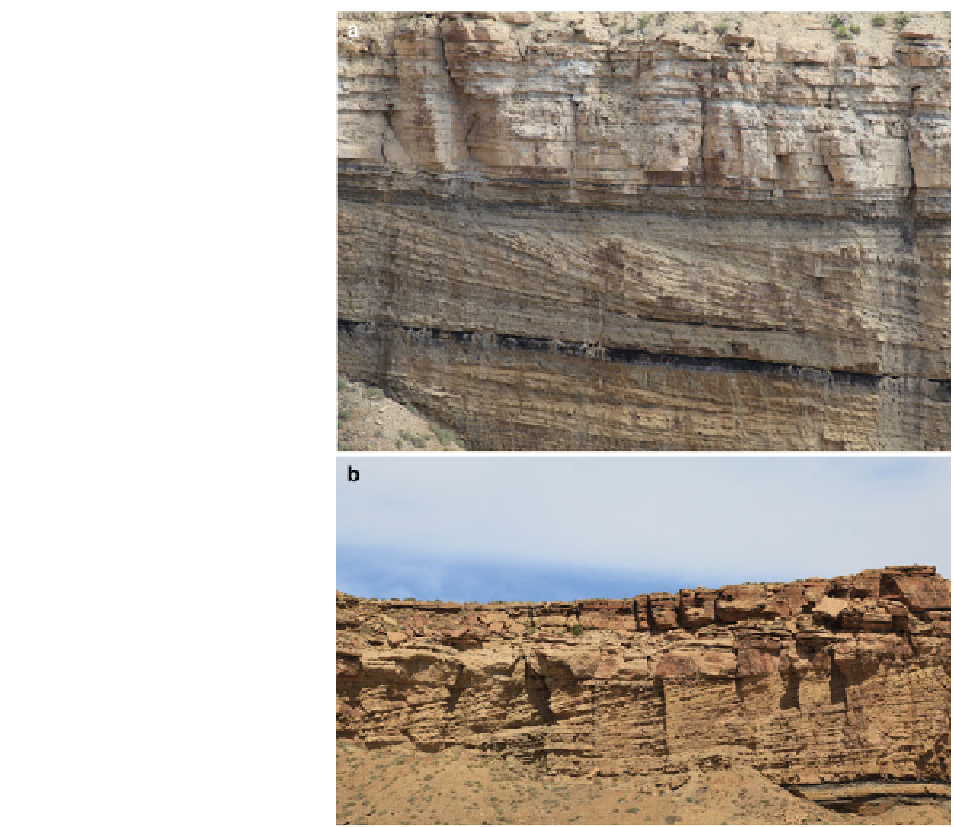Geology Reference
In-Depth Information
Fig. 17.12
Examples of
tidally infl uenced fl uvial
channels in the Neslen
Formation, Floy Basin, Utah.
The inclined heterolithic
strata that fi ll the channels
(4 m high in
a
, 10 m high in
b
) contain brackish-water
trace fossils in places, and
abundant tidally deposited
mud drapes and layers
strata of N. Utah and W. Colorado. The tidal signals
are often most clear in the upper parts of some of these
sinuous channel units as thick, intertidal fl aser, wavy
and lenticular strata, with their capping supratidal
mudstones and coaly salt marsh deposits (Figs.
17.11
and
17.12
). In the more proximal reaches of the fl uvial-
tidal transition, coarser fl uvial deposits with the wood-
borer
Teredolites
can be seen to interdigitate with more
heterolithic point bar strata that contain small brackish-
water traces of
Teichichnus.
The importance of recognizing tidal effects within
mainly fl uvial strata, in locations far landward of the
open shoreline, was emphasized in the classic work
of Shanley and others (
1992
), and has become a key
method of correlating Campanian shoreline succes-
sions, via tidally-infl uenced estuarine incursions into
Campanian coastal and alluvial plains, 10s to 100 km
behind the pinch-out of coeval shoreline bodies
(McLaurin and Steel
2000
; Aschoff
2008
; Gomez-
Veroiza and Steel
2010
) .
17.2.4 Tidal Criteria: Campanian
Middle-to-Outer Estuary Zones
Typical sites in
middle to outer estuarine zones
where tidal
signals can be identifi ed are on the upper fl ow-regime
sand fl ats and associated channels of tide-dominated

